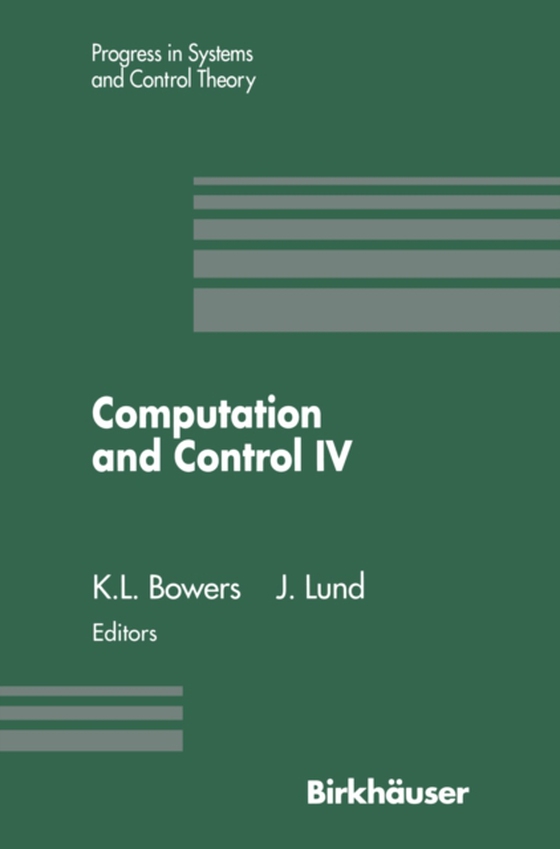
Computation and Control IV e-bog
436,85 DKK
(inkl. moms 546,06 DKK)
The fourth Conference on Computation and Control was held at Mon- tana State University in Bozeman, Montana from August 3-9, 1994. These proceedings represent the continued evolution of the cross-disciplinary dia- logue begun at the 1988 conference (Volume 1 of PSCT) and continued on a biennial basis in 1990 and 1992. Those proceedings are housed in Volume 11 of PSCT and Volume 15 of PSCT, resp...
E-bog
436,85 DKK
Forlag
Birkhauser
Udgivet
6 december 2012
Genrer
Cybernetics and systems theory
Sprog
English
Format
pdf
Beskyttelse
LCP
ISBN
9781461225744
The fourth Conference on Computation and Control was held at Mon- tana State University in Bozeman, Montana from August 3-9, 1994. These proceedings represent the continued evolution of the cross-disciplinary dia- logue begun at the 1988 conference (Volume 1 of PSCT) and continued on a biennial basis in 1990 and 1992. Those proceedings are housed in Volume 11 of PSCT and Volume 15 of PSCT, respectively. In recent years considerable effort has been devoted to the problem of developing rigorous numerical methods and computational tools for con- trol design and analysis. Although computational problems in control are extremely complex, these problems often have special structures that can be exploited to obtain both theoretical and computational results. More- over, problems that arise from applications are best addressed by interdis- ciplinary approaches where experts in various disciplines (e. g. numerical analysis, control theory, fluid dynamics) come together and create numer- ical algorithms specifically for use in control design. This communication not only creates new mathematical tools, it often produces new research problems in the individual disciplines. This conference continues to bring together leading experts in control theory, numerical mathematics and var- ious application areas to discuss recent developments in interdisciplinary approaches to computational control. The organizers acknowledge the generous support of the Montana State University Foundation, the National Science Foundation's Division of Mathematical Sciences and the EPSCoR Program (Montana Group for Nonlinear Science).
 Dansk
Dansk

